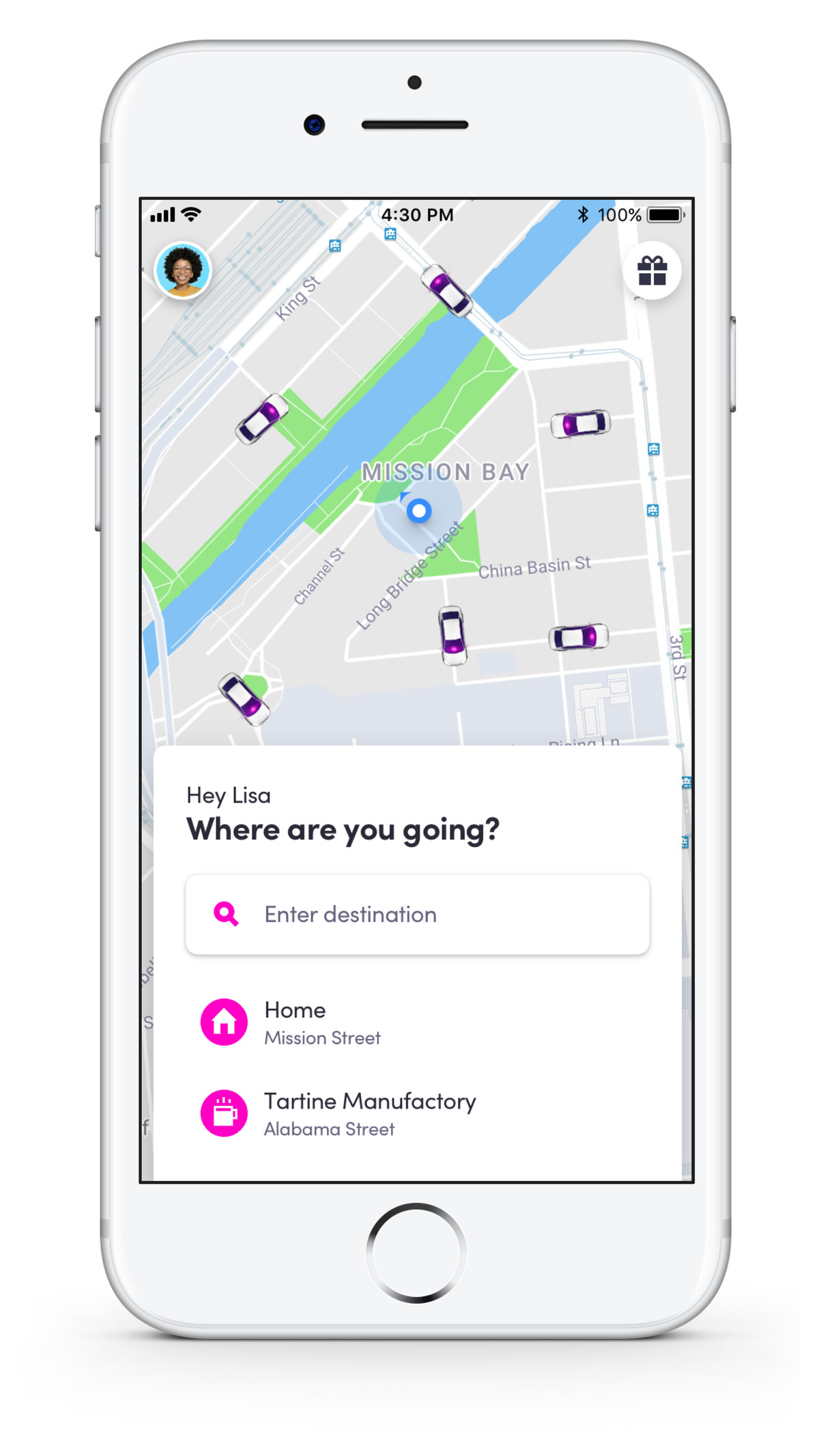Lyft’s app for riders is getting a fresh new look, with a greater emphasis put on shared rides and public transportation. It’s Lyft first redesign in almost three years, and will begin rolling out to everyone who uses the ride-hailing service by the end of June, the company said today.
There will be some major differences. Lyft’s carpooling service Lyft Line is being rebranded as “Shared Rides,” and will be more prominently featured in the app — part of the ride-hailing company’s broader mission to reduce its carbon footprint by encouraging strangers to take more trips together. After inputting a destination, riders will be asked to choose between a solo ride or a shared one, with fare estimates offered for both.
Lyft was one of the first ride-hailing companies to offer carpooling, launching Lyft Line in 2014. Now the company wants these shared trips to account for 50 percent of all of its business by the end of 2020. That goal fits in nicely with its other predictions, such as road pricing to encourage more carpooling, and ending personal car ownership.
“A lot of how we’ve thought about this is to put shared rides front and center,” Lyft president John Zimmer told The Verge. The app “looks a lot better, and looks a lot more modern. But aside from it just being a fresh coat of paint, there was a lot of intention into how can we use the redesign to better deliver upon the mission of the company.”
In addition to lowering its carbon footprint and reducing vehicle ownership rates, Lyft’s mission naturally includes competing with Uber. In 2016, Lyft’s much larger rival went minimal with its app redesign. Two years later, Lyft is now doing the same.
Today, when you open the app, you see a large box containing a list of all of Lyft’s many options — Line, Plus, Lux, SUV, etc — that takes up almost two-thirds of the screen. Starting at the end of the month, the app will have a cleaner, less cluttered look, said Katie Dill, the company’s vice president of design. With the map as the background, users will see a simple text box underneath a straightforward question: “Where are you going?” (Which sounds very similar to Uber’s text field asking “Where to?”)
/cdn.vox-cdn.com/uploads/chorus_asset/file/11491157/Press___Home_Screen.png)
/cdn.vox-cdn.com/uploads/chorus_asset/file/11491159/Press___Mode_Selector.png)
“That change essentially provides this beneficial ripple effect for our product,” Dill said. “Because if we know where you’re going, and we can assume where you are based on GPS, we can give you answers to the questions you might have about what’s the right ride for you more quickly.”
The new app will be customized based on a riders’ preferred services and locations. The algorithm will now take into account fare price, trip time, and more to surface the most efficient route for users, whether it’s shared or a solo ride. Lyft is also introducing a new “one tap to ride” feature so you can get to your frequent destinations faster. And after a driver accepts the trip requests, the tiny vehicle making its way across the map will display a certain color light that corresponds to the color the rider will see on the driver’s dashboard Amp device.
Also part of the redesign: a tweak to the algorithm to encourage riders to request pickups on side streets rather than main roads. The company tested this feature on Valencia Street in San Francisco earlier this year, which led to over 20,000 pickups diverted to side streets. This is part of a broader effort to optimize ride-hailing trips by asking the riders to do a little more walking so drivers can avoid busy main drags.
Mass transit is also a big part of the redesign. Lyft announced partnerships with more than 25 cities across the country to integrate mass transit into its app. The first two integrations are coming to passengers in two California communities: Marin County and Santa Monica.
Riders in those locations will see transit options included as part of their navigation details. For example, someone traveling from Santa Monica Pier to the city’s airport may be instructed to take the Big Blue Bus to the stop closest to the airport, where they can then hop into a Lyft for the remainder of the trip.
This isn’t exactly new in the ride-sharing world. Uber has its own share of transit agency partnerships, and earlier this year, the company’s CEO Dara Khosrowshahi announced an ambitious plan to integrate a variety of new transportation options to its app, including bikes, car-sharing vehicles, and public transportation like buses and trains.
Neither Uber nor Lyft offer ways for riders to purchase bus or train tickets through the app, but both say its on the horizon. Lyft is also been dabbling in bike-share, teaming up with Baltimore’s service and reportedly angling to acquire Motivate, the biggest bike-share operator in the US. (“No comment,” Zimmer grinned in response to a question about the possible deal.)
Its all part of the fierce competition between Uber and Lyft to add more and more transportation services to their platforms. It sounds great now, but at what point will these multi-billion dollar companies start to strain under the weight?
